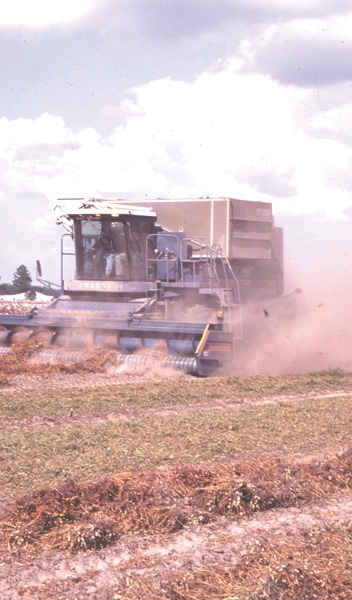April 11, 2011

Yield monitor use in peanuts could help farmers improve management, possibly decrease costs and help identify areas within fields that need special attention.
“But monitoring yields in peanuts is harder than for other crops,” said Wes Porter, an Extension agricultural engineer with Oklahoma State University, during a production seminar at the annual Oklahoma Peanut Expo in Lone Wolf.
Porter said the increased amount of foreign matter picked up by a peanut combine complicates the process. Dust is also a critical issue and can “result in erroneous readings and in some cases may damage the sensors. Dust, dirt and debris can scratch the lens (on an optical monitor) and prevent an accurate reading.”
Porter, who works in the Biosystems and Ag Engineering Department at Oklahoma State, said currently available monitors are designed for other crops. He began working on designs for a peanut yield monitor while an undergraduate student at Clemson University in South Carolina and is continuing that effort at OSU.
The possibilities should help peanut farmers analyze production inputs, he said. “What will a yield monitor do for a peanut farmer? He can use it to identify and quantify yield variability across a field, identify low and high spots to create management zones, and identify areas for major input changes.”
He said identifying field variability—labeling areas as low, very low, high and very high—creates opportunities to develop management zones for variable rate applications of nutrients, water and other resources.
Porter said when peanut producers use the current monitors they may need to change calibration more often than they would with cotton or other crop monitors. Moving from one soil type to another—clay to sand for instance—may require a calibration change.
He said calibration changes can be made quickly.
He’s testing a cotton yield monitor that he modified to prevent damage to the sensors when used in peanuts.
You May Also Like




